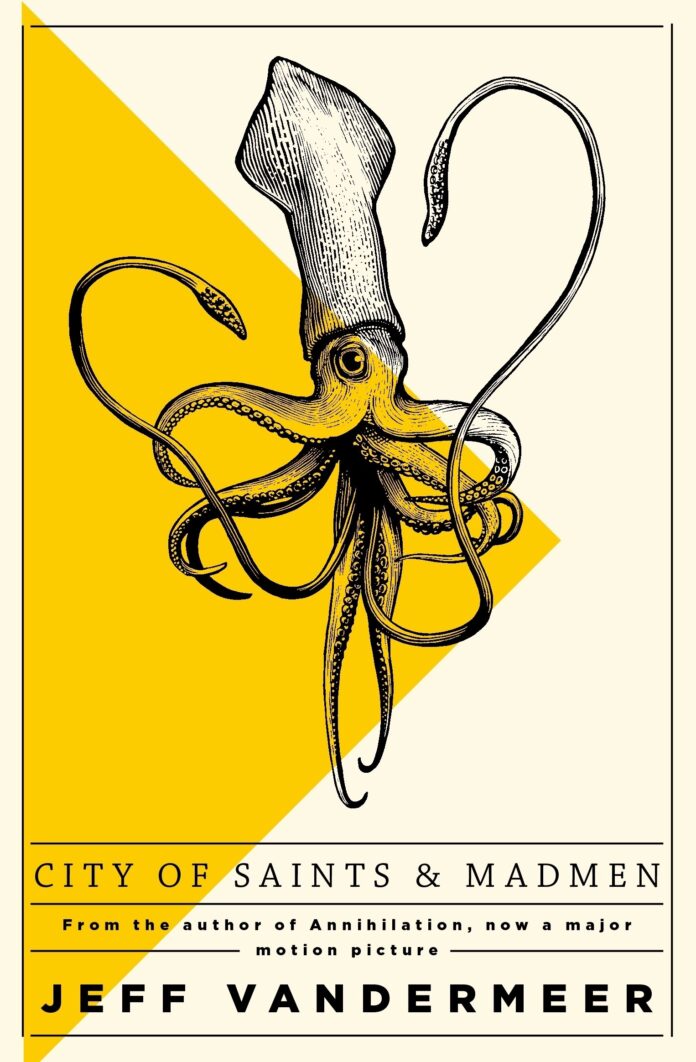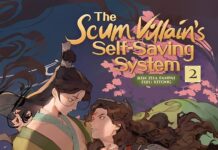In the shadowy corridors of speculative fiction, few works stir the creativity as vividly as Jeff VanderMeer’s City of Saints and Madmen. This collection of interconnected stories invites readers into Ambergris, a city both beguiling and unsettling, where myth and reality intertwine in labyrinthine fashions. seeks to navigate the dense, often mystifying terrain of this literary creation-a place where beauty and madness coexist, and where every page challenges perceptions of narrative and genre. Through this review, we unravel the layers of vandermeer’s intricate world-building and the haunting allure that makes Ambergris a lasting presence in contemporary fantasy.
The labyrinthine worldbuilding that shapes the eerie atmosphere and complex narrative layers in City of Saints and Madmen
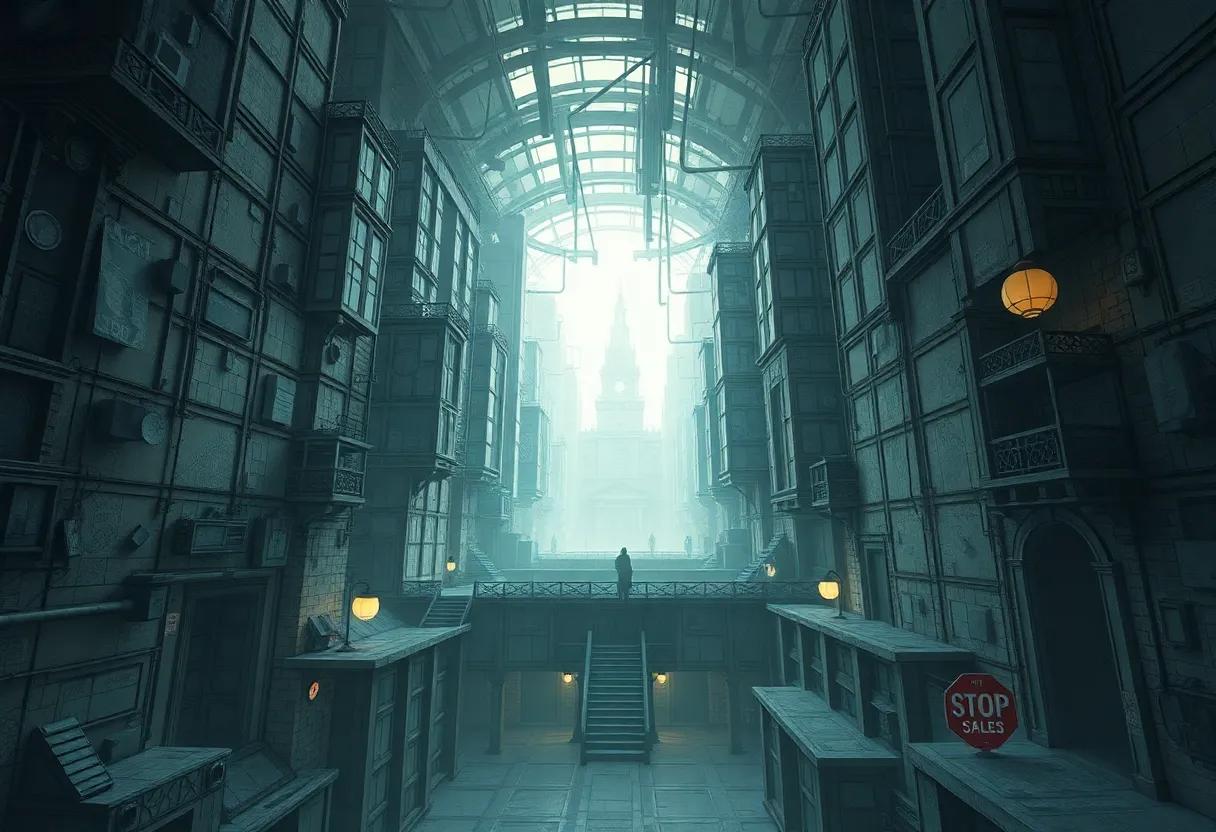
VanderMeer’s creation is a feat of intricate worldbuilding that transcends conventional boundaries, drawing readers into a multifaceted city where every corner reverberates with cryptic history and beguiling mysteries. The city pulses with a strange life of its own, a place where architecture feels almost sentient and the streets themselves whisper fragmented secrets. The layering of lore, myth, and carefully woven narratives constructs an environment that is as much a character as the people who inhabit it. This immersive design fosters an unsettling ambiance,where the familiar and the alien coexist in uneasy harmony,inviting readers to become explorers of a living maze rather than mere observers.
Embedded within this atmospheric depth is an elaborate structure of narrative threads, each adding dimensions to the overarching enigma.The complexity is artfully crafted through various storytelling methods-diary entries, folklore, theatrical scripts-that enrich the texture of the city’s past and present. To help visualize this intricate composition, consider the relationship between key elements:
| Element | Role | Effect on Atmosphere |
|---|---|---|
| Architectural Oddities | Physical manifestations of history | Creates disorientation and unease |
| Mythic Folklore | Foundational backstory | Invokes timeless mystery |
| Interwoven Narratives | Multiple perspectives and voices | Amplifies complexity and depth |
this meticulous attention to detail, combined with the blurred lines between reality and fantasy, invites readers to engage actively with the text-questioning the boundaries of truth and fiction. The city’s shifting, labyrinthine layers become both setting and puzzle, shaping an eerie, immersive canvas where every revelation opens new corridors of intrigue.
Examining the interwoven tales and how VanderMeer crafts a multidimensional experience through interconnected stories
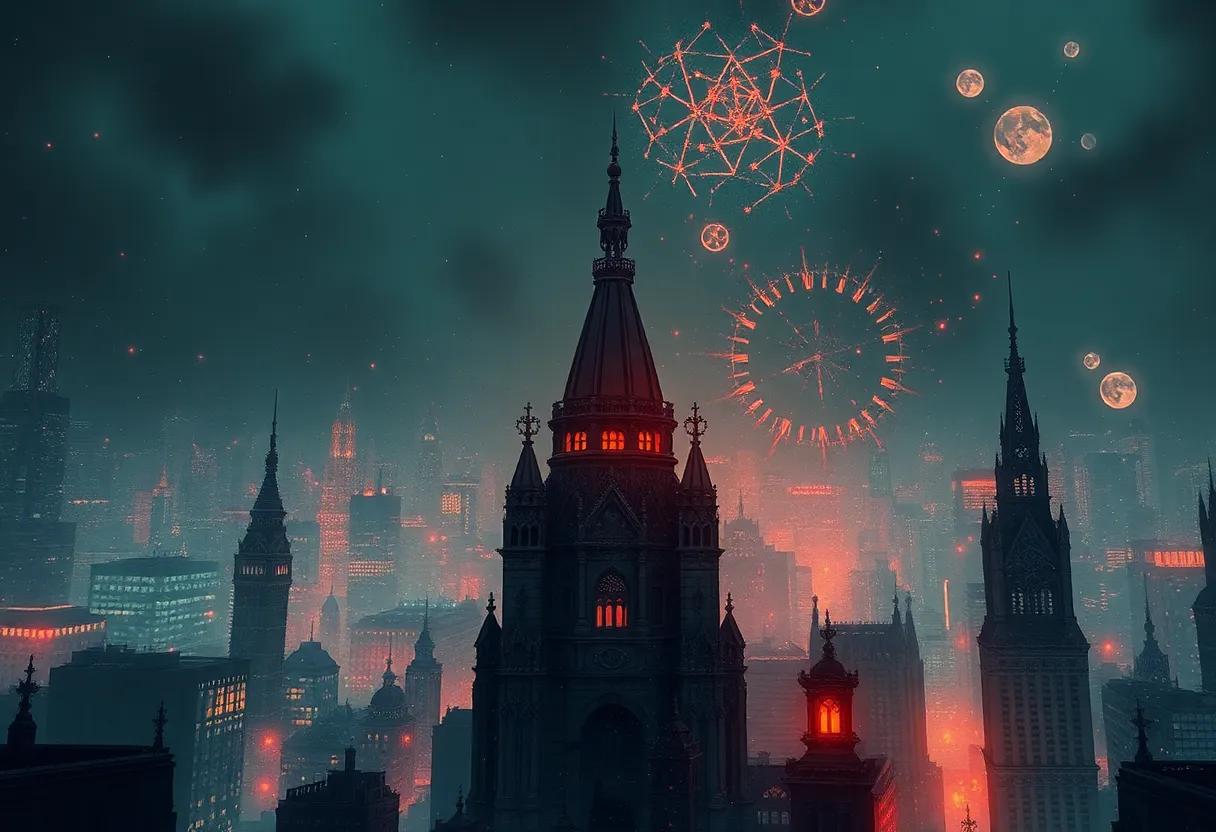
VanderMeer’s narrative architecture in City of Saints and Madmen is a masterclass in weaving complexity without sacrificing coherence. Each story pulses with its own distinct rhythm, yet they all intertwine to create a living, breathing cityscape-a kaleidoscope of perspectives that invite readers to piece together the overarching enigma. From cryptic footnotes to hidden glossaries, the text encourages active participation, transforming passive reading into an engaging exploration. What emerges is not just a story but a multidimensional experience, where history, myth, and madness collide in a carefully crafted dance.
- Layered storytelling: VanderMeer’s nonlinear approach challenges conventional narrative limits.
- Shared motifs: Recurring symbols and locations bind standalone tales into a cohesive whole.
- Interactive elements: Marginalia and fictional appendices serve as portals to deeper lore.
The interplay between characters and settings across the different stories creates a web of narrative resonance.Themes of obsession, decay, and revelation ripple through the text like an undercurrent, connecting seemingly isolated vignettes into a unified labyrinth of meaning. This multidimensionality compels readers to oscillate between the macrocosm of the city’s mythos and the microcosm of individual experience, blurring the boundary between author and audience, reality and fantasy.
| Narrative Element | Function |
|---|---|
| Multiple Perspectives | Enriches world-building & deepens mystery |
| Embedded Documents | Adds authenticity & layers of meaning |
| Recurring Characters | Creates connective tissue across tales |
The role of architectural descriptions in enhancing the surreal and dreamlike qualities of Ambergris cityscape
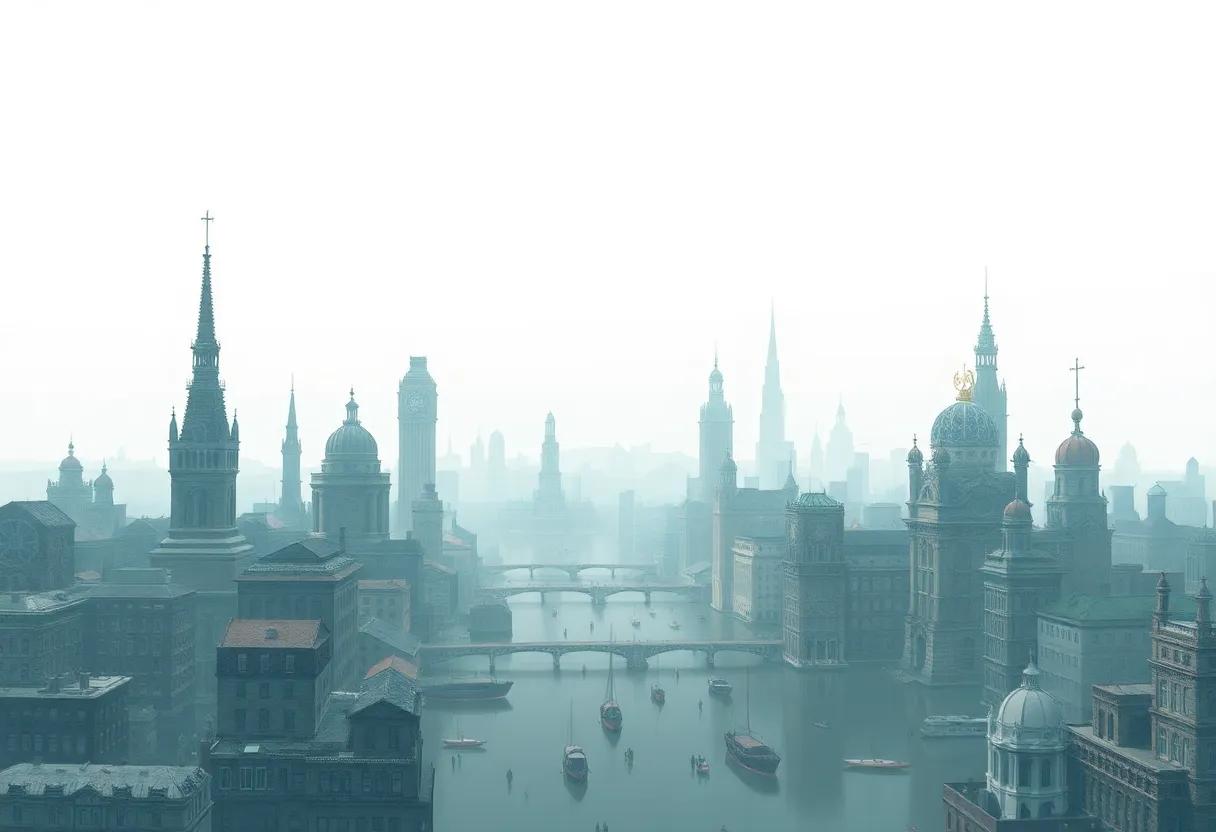
The architectural fabric of Ambergris unfolds as a living canvas, where the conventional rules of space and structure dissolve into a realm of uncanny beauty.Buildings twist and contort with an almost organic fluidity, their facades dripping with the palpable weight of forgotten histories and whispered secrets. This labyrinthine cityscape becomes a physical manifestation of the mind’s deepest recesses, where solidity and chaos dance in a hauntingly harmonious ballet. By bending familiar architectural norms, VanderMeer invites readers to slip between the folds of reality and dream, making the city not just a backdrop but an active participant in the storytelling.
Key to this surreal atmosphere is the way Ambergris’s architecture conveys a blend of the ancient and the ephemeral, evoking both grandeur and decay simultaneously. The use of details such as towering spires crowned with rusted finials, cobblestone streets that seem to pulse underfoot, and shadow-drenched alleys whispering forgotten incantations creates an immersive experience. Behind this design lies a delicate tension:
- Ambiguity of purpose: Spaces that defy their function, lending the city a dreamlike fluidity
- Intersecting timelines: Architectural layers that merge eras, collapsing history into a singular surreal continuum
- Material paradoxes: Structures that seem simultaneously decayed and freshly forged, grounding the fantastic in unsettling reality
| Architectural Element | Surreal Effect | Emotional Response |
|---|---|---|
| Twisting Staircases | Defies gravity and logic | Disorientation and intrigue |
| Opaque Glass Windows | Obscures interior reality | Curiosity and unease |
| Levitating Balconies | Suspended and unreal | Wonder and suspense |
These carefully crafted architectural nuances elevate Ambergris from mere setting to a character in its own right, a mutable force that shapes perception and narrative alike. The city becomes a surreal mirror, reflecting the fractured psyche of its inhabitants and readers, blending the real with the fantastical in a seamless, hypnotic experience.
Analyzing the blend of fantasy and horror elements that define the unsettling tone throughout the book
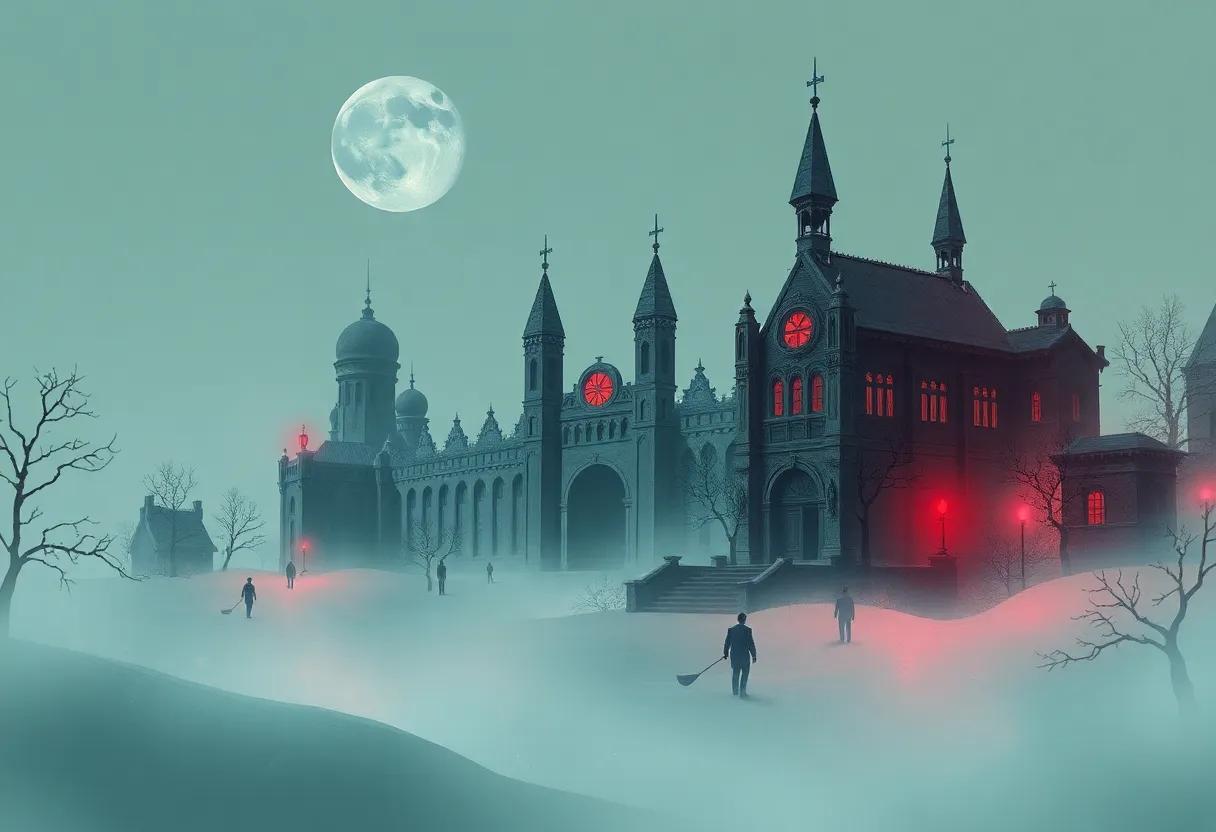
Jeff VanderMeer masterfully entwines elements of fantasy and horror to create a narrative landscape that is as mesmerizing as it is disquieting.The city’s otherworldly architecture and bizarre inhabitants feel both surreal and terrifying, blurring the lines between dream and nightmare. Fantastical creatures roam the shadowed streets, their presence evoking a deep sense of unease that permeates every chapter. The book deviates from customary genre boundaries, opting instead for a hybridized texture that unsettles readers by constantly shifting expectations. This is a world where magic is tinged with menace, and the supernatural reveals latent terrors lurking beneath the surface.
- Mystical urban landscapes that distort reality
- Foreboding atmospheres enhanced by unpredictable horror
- Characters who teeter on the edge of human and monstrous
- Subtle dread that grows through the interplay of fantasy and fear
To better understand how these components interact,consider the following breakdown of their key narrative functions:
| Element | Role | Effect |
|---|---|---|
| Enigmatic Creatures | symbolize unknown fears | Heighten suspense and curiosity |
| Warped Architecture | Shifts sense of reality | Instills disorientation and tension |
| Magical Phenomena | Introduce unpredictability | Create an atmosphere of instability |
The seamless fusion of these fantastical and horrific elements crafts a persistent mood of uncertainty that lingers long after the final page is turned, making the city-both a setting and a character itself-an unforgettable labyrinth of eerie wonder.
Character complexity and their symbolic significance within the enigmatic social and political structures of Ambergris
within the shadowed alleys and twisting corridors of Ambergris,characters emerge as multifaceted enigmas,each embodying fragments of the city’s riddled psyche. VanderMeer crafts personalities not merely as individuals, but as symbolic conduits representing broader ideological currents and tensions festering beneath the surface. the ambiguous nature of these figures mirrors the mutable and often contradictory political structures that govern Ambergris-where power is as much a whispered legend as it is a brutal fact. Whether it’s the urbane yet morally ambiguous sectarians or the spectral garbed agents of ancient houses, every persona operates at the intersection of personal ambition and sociopolitical subterfuge, evoking a landscape rife with mistrust and hidden agendas.
Delving deeper, their roles can be parsed to reveal an intricate web of allegories that resonate beyond the story’s boundaries. As a notable example, the tension between the city’s archaic aristocracy and its revolutionary underbelly can be charted through a cast whose alliances and betrayals reflect the intricacies of class struggle and ideological conflict. The following table summarizes key characters alongside their emblematic significance and prevailing political affiliations:
| Character | Symbolic Role | Political Alignment |
|---|---|---|
| The Pale king | Embodiment of elusive authority | Archaic aristocracy |
| The Graycaps | agents of subversion and decay | Revolutionary underground |
| The Archivist | Custodian of hidden knowledge | Neutral, knowledge as power |
- Interpersonal dynamics reflect broader ideological schisms.
- characters’ evolving loyalty highlights the instability within Ambergris’s power balance.
- Symbolic layering invites readers to decode the unspoken rules that govern society’s undercurrents.
The evocative use of language and prose style that immerses readers into the hauntingly vivid realm
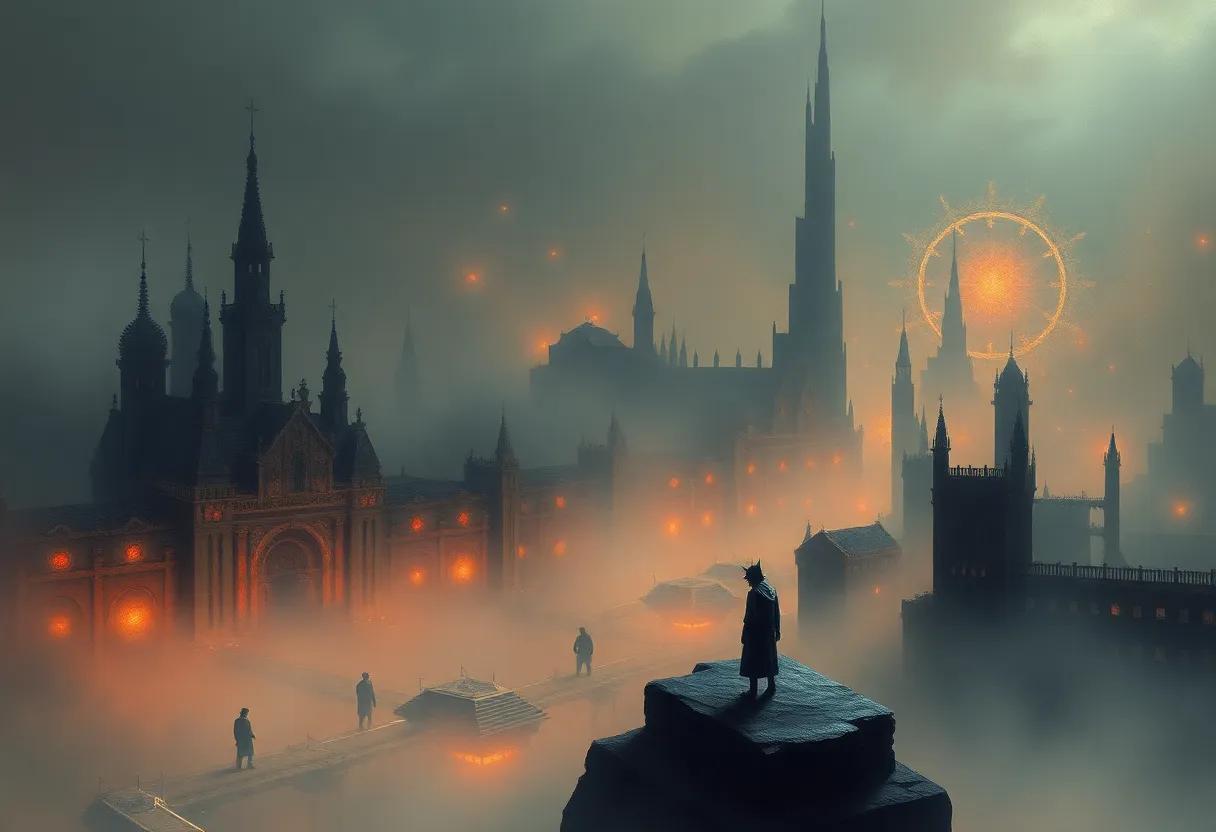
The prose in VanderMeer’s *City of saints and Madmen* is a masterclass in atmospheric storytelling, weaving a tapestry of words that seduce and unsettle in equal measure. Each sentence is carefully crafted, with a lyrical cadence that feels both hypnotic and foreboding. The vocabulary dances between the archaic and the inventive, conjuring images that are simultaneously gorgeous and grotesque. This unique blend of style invites readers to not merely observe but to inhabit Every Corner of Ambergris, where shadows breathe and silence murmurs secrets long forgotten.
Key elements that define this immersive prose style include:
- Rich sensory detail: Vivid descriptions that appeal to sight, sound, smell, and texture, enveloping the reader’s senses.
- Unreliable narratives: Stories told through fragmented memories, whispers, and cryptic notes that deepen the mystery.
- Metaphorical layering: Complex symbolism that turns ordinary objects and events into gateways of meaning and dread.
| Prose Element | Effect on Reader | Example |
|---|---|---|
| Allusive Language | Creates a sense of hidden lore | “…the fungi whispered secrets like forgotten tongues.” |
| Fragmented Narrative | Evokes mystery and disorientation | “No one remembers where the shadows begin.” |
| Baroque Imagery | Paints vivid, haunting visuals | “the streets dripped with night’s lacquered hush.” |
Unpacking the themes of memory, identity, and madness that permeate the stories in subtle yet profound ways
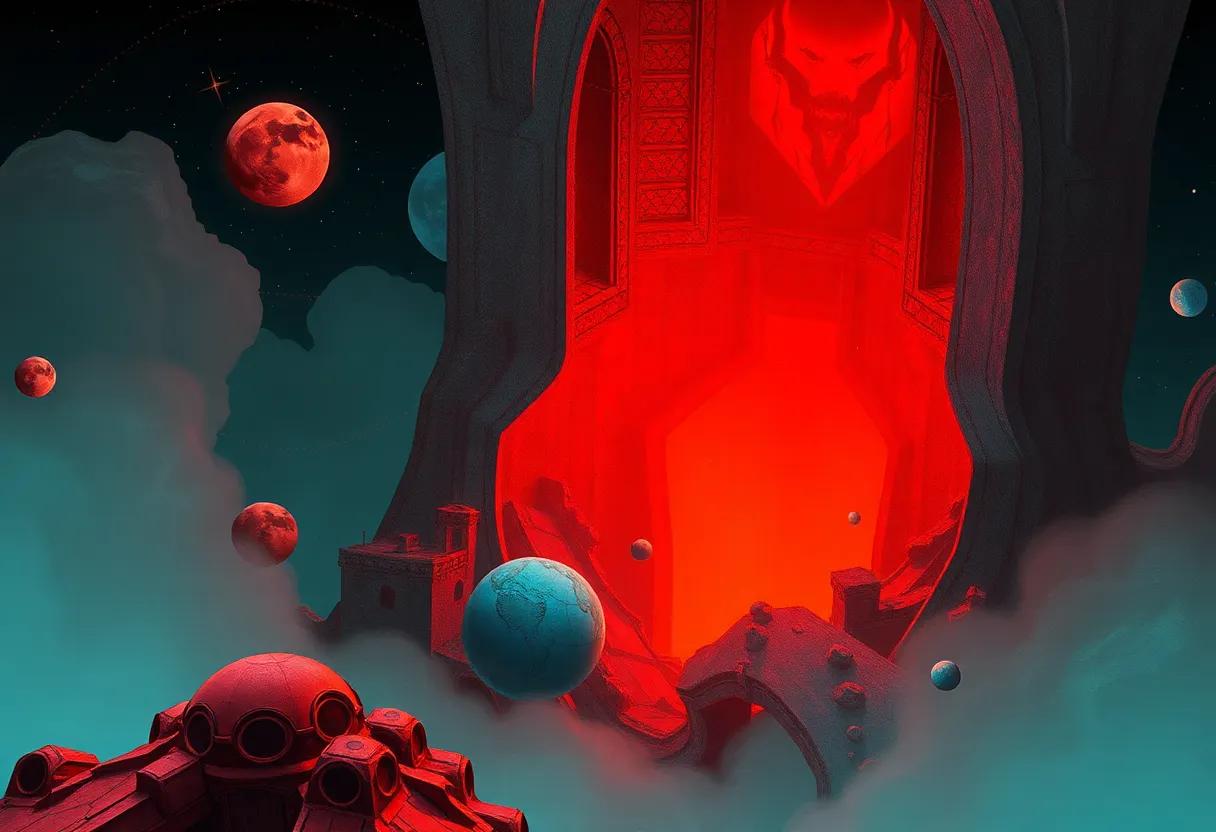
Within the labyrinthine alleys and shadowed corners of VanderMeer’s imagination, the fluidity of memory emerges not merely as a recollection of past events, but as a living, breathing force that reshapes reality itself. Characters grapple with fragmented recollections that ripple outward, blurring the line between what is remembered and what is fabricated. This instability of memory becomes a conduit for exploring the fragile construction of identity, where the self is continually rewritten in response to both internal desires and external impositions. Rather than static entities, the inhabitants of the city embody mutable selves, caught in an incessant dance between remembering, forgetting, and reimagining their places in an unsettling world.
Madness, in this context, is less a clinical diagnosis and more a subtle, insidious undercurrent that infects the psyche of both individuals and the collective consciousness of the city. It manifests as a kaleidoscope of surreal experiences-delirious dreams, cryptic symbols, and eerie encounters-that unravel conventional notions of sanity. This pervasive ambiguity invites readers to question the boundaries between sanity and insanity, reality and illusion. The interplay of memory, identity, and madness culminates in a delicate tension, illustrated in the table below, that captures the essence of VanderMeer’s storytelling:
| Theme | Characteristic | Effect on Narrative |
|---|---|---|
| Memory | Fragmentation & Reinterpretation | Destabilizes time and history |
| Identity | Fluid & Multifaceted | Questions fixed selfhood |
| Madness | Ambiguous & Pervasive | Blurs reality and delusion |
Visual motifs and their contribution to the novel’s hauntingly beautiful yet disturbing imagery
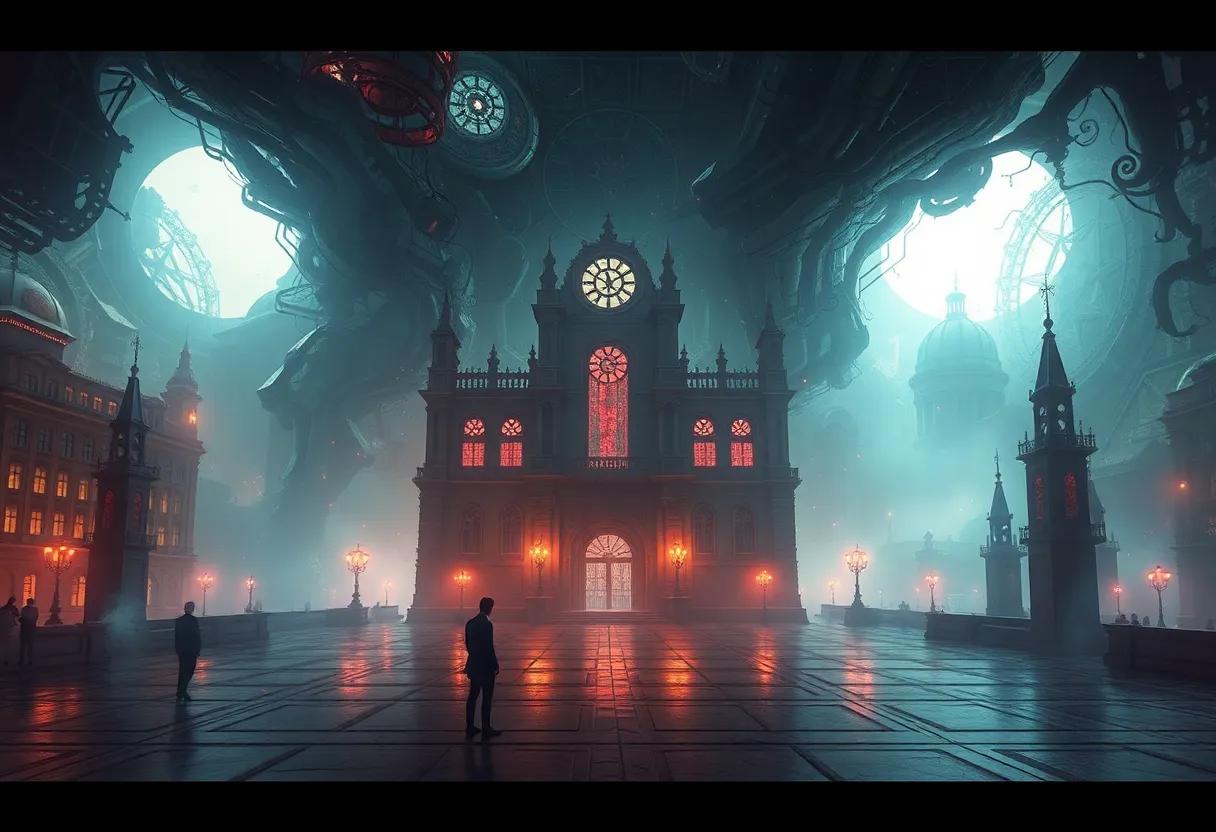
The novel’s tapestry is woven with a rich array of visual motifs that craft an atmosphere both mesmerizing and unsettling. From the endlessly twisting streets of Ambergris to the cryptic murals that bleed color into shadow, these recurring images evoke a city that feels alive and sentient-its beauty marred by somthing sinister lurking beneath. The presence of mist, decay, and grotesque flora intertwines nature with urban chaos, creating a delicate balance between allure and dread. This careful arrangement of imagery invites readers to lose themselves in a world where the familiar bends into the uncanny, evoking emotions that oscillate between wonder and discomfort.
Among these motifs,certain symbols stand out for their haunting resonance:
- shadow and light interplay-casting ambiguity over truth and illusion
- Masks and hidden faces-a reflection of identity fractured and concealed
- Labyrinthine architecture-representing both literal and psychological entrapment
- Blooming fungi and spores-signifying both decay and unbidden growth
| Motif | contribution | Emotional Impact |
|---|---|---|
| Mist | Obscures vision,blending reality and dream | Confusion,Mystery |
| Cryptic symbols | Suggests hidden knowledge and forbidden lore | Intrigue,Unease |
| Decay | Reflects impermanence and corruption | Melancholy,Dread |
Recommendations for readers drawn to atmospheric,genre-blending narratives with richly layered storytelling
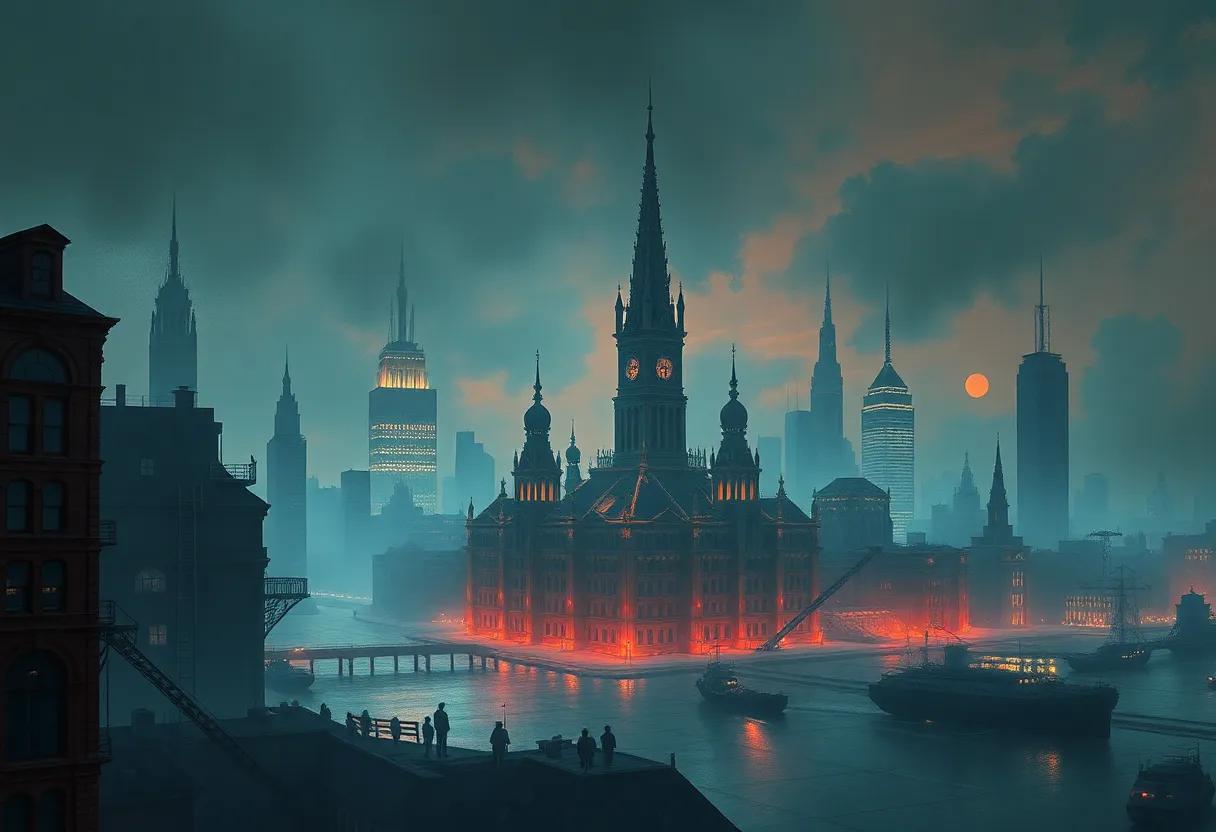
For those who find themselves captivated by narratives that weave intricate atmospheres with eclectic genre borders, City of saints and Madmen is a treasure trove.VanderMeer’s work doesn’t just tell a story-it immerses you in a living, breathing world where gothic horror intersects with dark fantasy and surreal mystery. If your literary tastes lean toward the cryptic and multifaceted, you’ll appreciate the way the text layers history, myth, and unreliable narration to create a storyscape as tangled and beguiling as Ambergris itself.
Readers eager to plunge deeper into similar labyrinthine tales might explore authors and works who also embrace this complexity. These narratives frequently enough feature:
- Meticulous world-building: Worlds that feel simultaneously alien and vividly familiar.
- Genre fluidity: Blending elements from horror, fantasy, mystery, and speculative fiction.
- Multi-dimensional characters: Figures shrouded in ambiguity and moral complexity.
- Layered storytelling: Stories told through fragmented perspectives, journals, and ephemera.
| Recommended Title | Author | Why It Resonates |
|---|---|---|
| Jonathan Strange & Mr Norrell | Susanna Clarke | Historical magic entwined with dark fantasy and detailed lore |
| The City & The City | China miéville | Urban mystery meets speculative world-building and political intrigue |
| Perdido Street Station | China Miéville | Hybrid horror and steampunk with grotesque, evocative narratives |
| House of Leaves | Mark Z. Danielewski | Experimental structure with haunting, layered storytelling |
How city of Saints and Madmen stands as a seminal work influencing contemporary speculative fiction writers
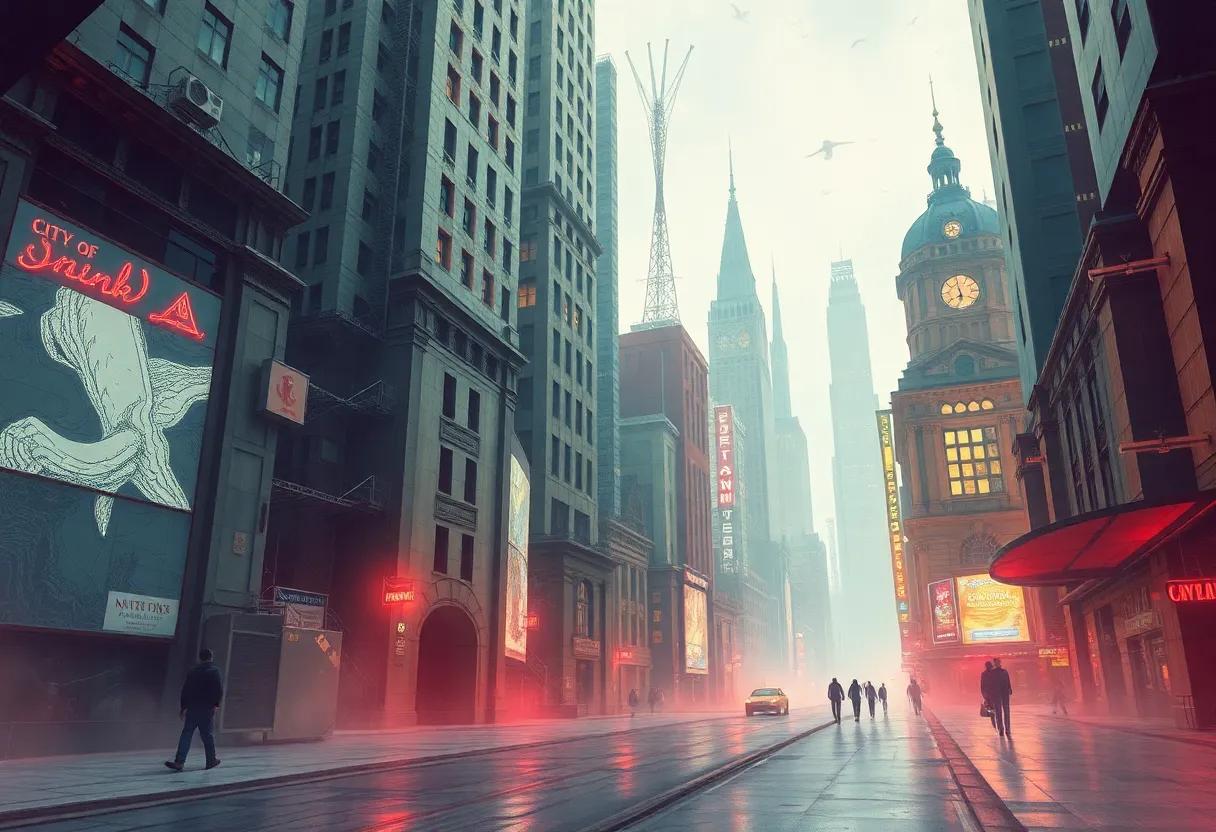
City of Saints and Madmen emerges as a cornerstone in speculative fiction, artfully weaving intricate mythologies with a richly layered narrative structure that challenges conventional storytelling. Jeff VanderMeer’s creation offers a multifaceted urban labyrinth, filled with shadowy histories and eccentric characters, providing contemporary writers a blueprint for world-building that transcends mere backdrop to become a living, breathing entity within the story. Its influence can be seen in the rise of speculative fiction that prioritizes atmospheric depth and psychological complexity, encouraging authors to embrace ambiguity and moral nuance rather than straightforward heroism or dystopia.
Many modern speculative fiction authors draw inspiration from VanderMeer’s method of blending genres and tones, evident in the following recurring elements:
- Fragmented Narrative Layers: Stories that interlock through documents, letters, and varying perspectives.
- nonlinear Storytelling: Emphasis on temporal disjunction to evoke mystery and suspense.
- Surreal Urban Environments: Cities depicted as sentient mazes where every corner hides a secret.
- Ambiguous Morality: Characters and societies that question the binaries of good and evil.
| Aspect | VanderMeer’s Execution | Contemporary Reflection |
|---|---|---|
| World-Building | Dense, multi-layered cityscapes | Immersive, character-centric settings |
| Story structure | Non-linear, anthology style | Multiple POVs, interconnected tales |
| Tone | Dark, surreal, mysterious | Blending horror, fantasy, and sci-fi |
| Themes | Madness, identity, decay | Existentialism, urban alienation |
Exploring the cultural and mythological influences that VanderMeer incorporates to deepen Ambergris’s mysterious allure
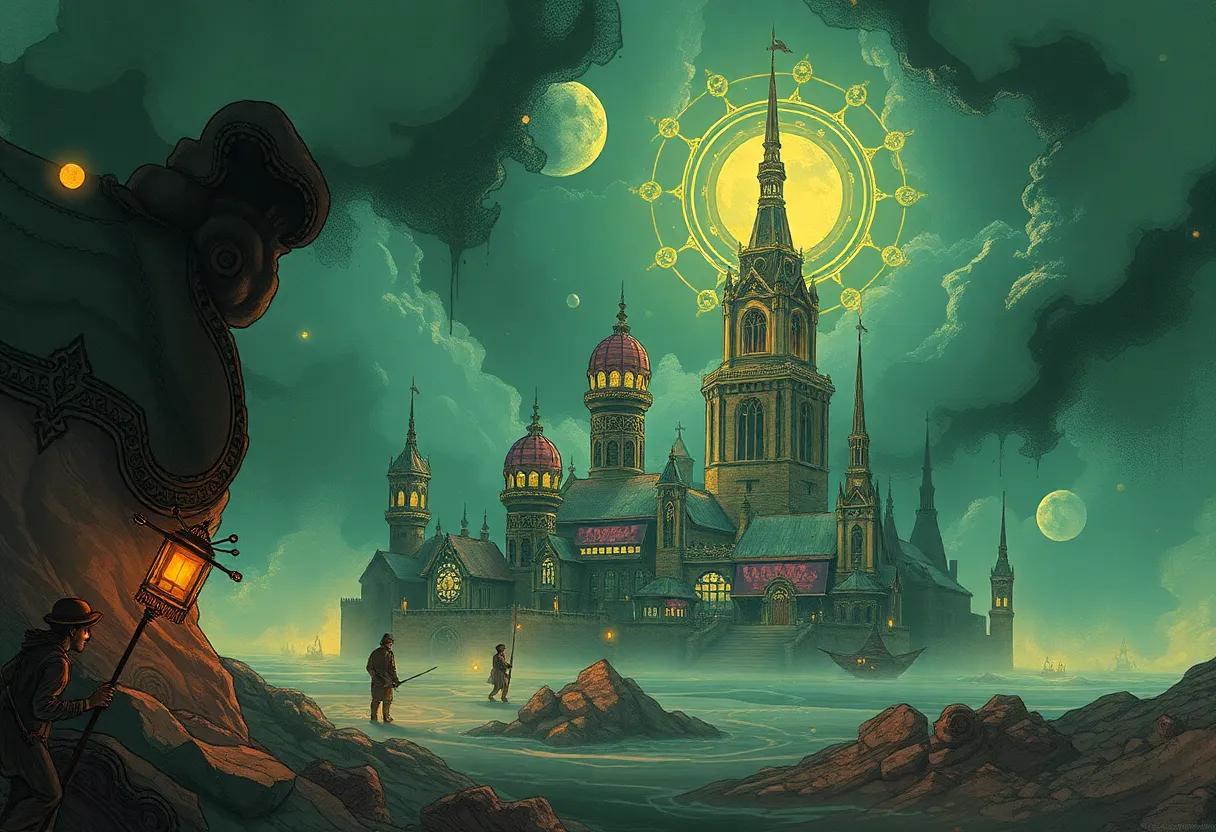
In City of Saints and Madmen, vandermeer masterfully weaves a tapestry of cultural and mythological threads that transform Ambergris into more than just a setting-it becomes a living enigma. Drawing from a blend of folklore, esoteric traditions, and obscure legends, his narrative architecture conjures a world where the mundane melts into the uncanny. The influence of *liminal spaces* from various mythologies permeates Ambergris, forging a cityscape that exists on the threshold between reality and the surreal. This purposeful ambiguity evokes a sense of timelessness and disorientation, compelling readers to question what lies beneath the surface of the city’s streets and histories. By integrating cryptic rituals and mythic creatures, VanderMeer deepens Ambergris’s allure, inviting readers to decode its mysteries alongside his narrators.
- Escher-like labyrinths: Architectural wonders that mirror the mental and spiritual complexity of the city.
- The reverence of forgotten deities: Echoing the city’s multifaceted religious and pagan undercurrents.
- Mythical beings: Entities who blur the lines between legend and reality.
| Mythological Element | Ambergris Reflection |
|---|---|
| The Fisher King | A fractured ruler whose wounds mirror the city’s decay. |
| Labyrinths and Mazes | Crumbling streets indicating moral and existential confusion. |
| Shapeshifting Entities | Blurred identities of citizens and creatures. |
| ritualistic Secrets | Obscure cults governing hidden knowledge. |
VanderMeer also channels the archetypal motifs of the *liminal hero* and the *unknowable other*,embedding psychological and metaphysical puzzles within Ambergris. The city’s inhabitants are frequently enough caught between shifting identities and histories, echoing mythic traditions of change and madness. Such figures are less characters and more symbols, reflecting the unstable intersections of culture, memory, and power within the city’s palimpsest.this interplay of myth and cultural resonance grants Ambergris a vibrant depth, encouraging readers to peel away layers of narrative like an onion-each revealing more profound enigmas masked by beauty and decay.
The impact of supplemental materials such as maps, documents, and artwork in expanding the book’s immersive quality

In VanderMeer’s City of Saints and Madmen, supplemental materials are not mere afterthoughts but integral strands woven into the fabric of the narrative.The inclusion of detailed maps invites readers to navigate the intricate alleyways and shadowed courtyards, transforming passive reading into an active exploration. These maps render the city as a living, breathing organism, encouraging a physical sense of place amidst the surreal tales. Accompanying documents-ranging from cryptic letters to official edicts-serve as authentic artifacts, blurring the line between fiction and reality.This compilation of ephemera deepens the layers of storytelling, making the city’s mysteries tactile and intriguingly elusive.
visual artwork further amplifies the immersive quality, painting vivid impressions of the city’s strange characters and otherworldly architecture. The illustrations function as windows into VanderMeer’s imagination, capturing moods that text alone might struggle to convey. Their stylistic interplay with the written word fosters a multidimensional experience where visual and literary elements coalesce. Below is a glimpse of how the supplemental materials interplay to enrich the reader’s journey:
| Supplemental Material | Purpose | Impact on Immersion |
|---|---|---|
| Maps | Navigation & spatial orientation | Creates a vivid sense of place and finding |
| Documents | World-building & lore depth | Adds realism and narrative complexity |
| Artwork | Visual mood & character visualization | Enhances emotional and atmospheric engagement |
considerations for approaching the non-linear narrative as a puzzle demanding active reader engagement

Immersing oneself in the labyrinthine structure of VanderMeer’s narrative demands more than passive consumption; it requires an active,almost detective-like engagement. The story’s fragmented chronology and shifting perspectives serve not just as stylistic flourish but as deliberate puzzles, inviting readers to piece together events and character motivations from scattered clues. This dynamic transforms reading into a participatory act,where each section is a shard of a shattered mirror,reflecting different facets of the same,inscrutable reality. Approach with patience and curiosity, as linear expectations must be traded for a willingness to navigate ambiguity and nonlinear causality.
Key strategies for decoding this complexity include:
- Tracking thematic echoes: Recurring motifs such as memory and identity aid in threading disparate narrative elements together.
- Mapping character intersections: Understanding how characters’ stories overlap provides insight into the story’s overarching architecture.
- Embracing temporal fluidity: Shifts in time are not errors but keys to unlocking symbolic and emotional resonance.
| Reader Approach | Benefit | Potential Challenge |
|---|---|---|
| Active Annotation | Clarifies connections | Requires extra effort |
| Multiple Readings | Deepens understanding | Time-consuming |
| Discussion with Others | Gains new perspectives | Depends on community access |
Insight into Jeff VanderMeer’s creative mindset and literary evolution leading to the conception of City of Saints and madmen
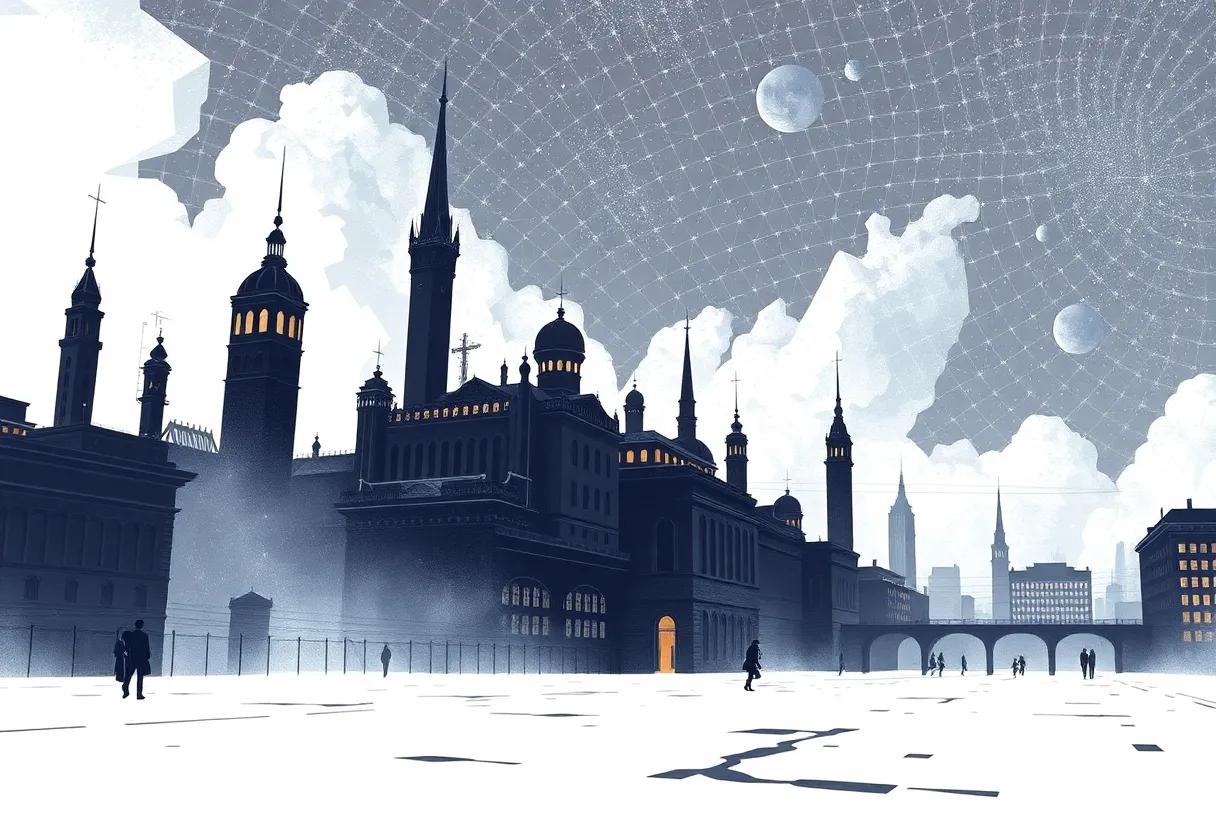
Jeff VanderMeer’s creative journey is a mosaic of surreal imagery, ecological contemplation, and a penchant for blending the uncanny with the familiar. his early forays into speculative fiction revealed an artist captivated by the fringes of reality, where traditional narrative structures give way to dreamlike explorations of place and identity. This evolution is vividly encapsulated in City of Saints and Madmen, a work that transcends conventional storytelling by immersing readers in the labyrinthine city of Ambergris-a setting as much a character as the inhabitants themselves. VanderMeer’s literary maturation showcases his ability to cultivate atmosphere while weaving intricate tapestries of mythical folklore, urban decay, and enigmatic histories that challenge and enchant in equal measure.
Crucially, VanderMeer’s approach dissects the boundaries between author, reader, and text, often utilizing metafictional elements that invite deep reflection on narrative creation and interpretation. He draws inspiration from a diverse palette, including Gothic literature, postmodernism, and ecological philosophy, each imprinting a unique texture onto his work. The following table highlights key themes and stylistic hallmarks that mark VanderMeer’s evolving craft,offering insight into the underpinnings of the city’s strange allure.
| creative Element | Description | impact on City of Saints and Madmen |
|---|---|---|
| Mythopoeia | Inventing detailed mythologies and folklores | Shapes Ambergris’s layered and mysterious history |
| Fragmented Narrative | Non-linear and multi-viewpoint storytelling | Creates an immersive, puzzle-like reading experience |
| Ecological Themes | Exploration of nature’s influence on urban decay | Reflection of symbiotic relationships within Ambergris |
| Metafiction | Self-aware narrative techniques | Blurs lines between reality and fiction in the text |
City of Saints and Madmen is a labyrinth not easily escaped-its twisting passages and shadowed corners invite both interest and uncertainty. VanderMeer’s mosaic of tales challenges readers to embrace ambiguity and to find beauty in the enigmatic. Whether wandering through its streets with curiosity or caution, one emerges changed, carrying with them the lingering echoes of a city that defies simple understanding. This is a work that rewards exploration, inviting readers to return again and again, each journey revealing new passages within its mysterious heart.

